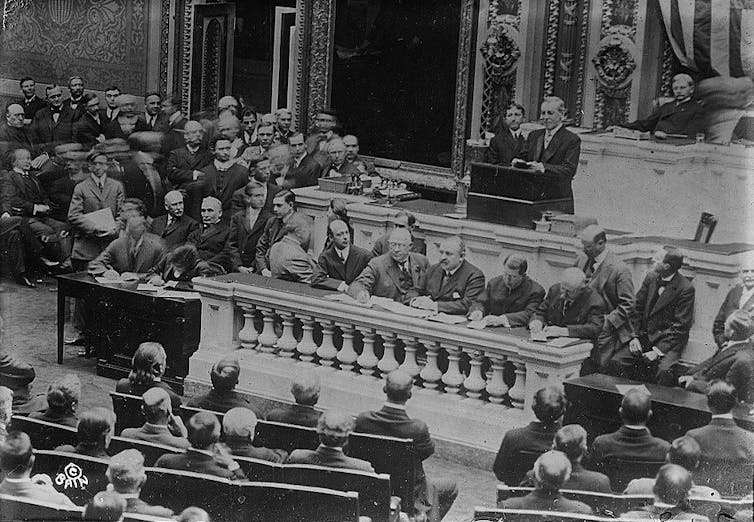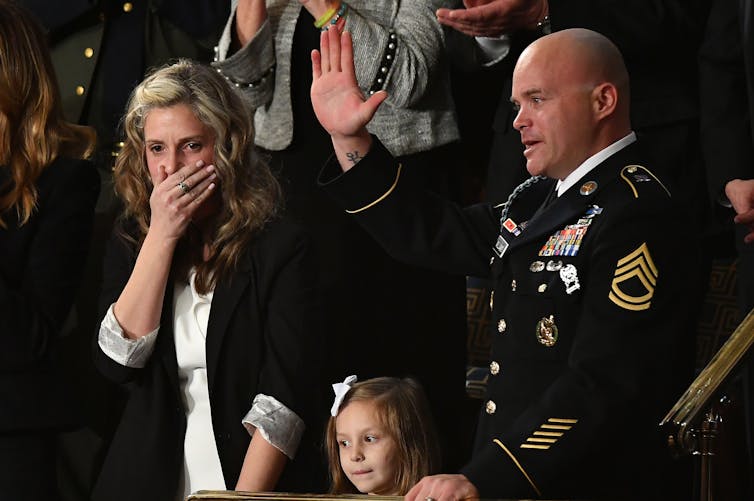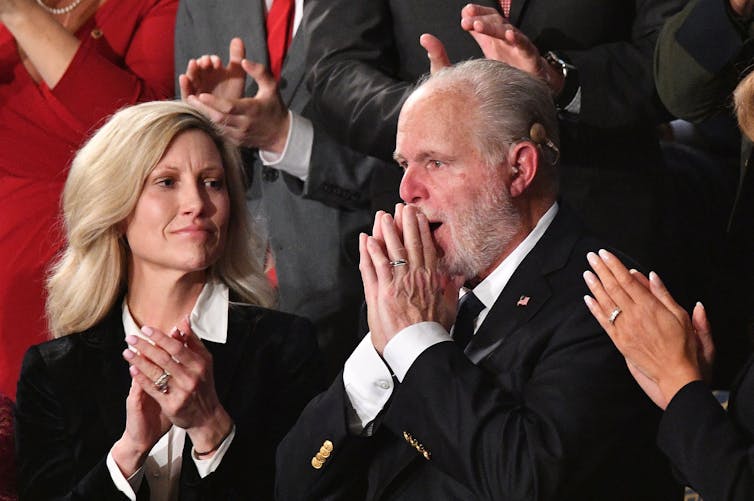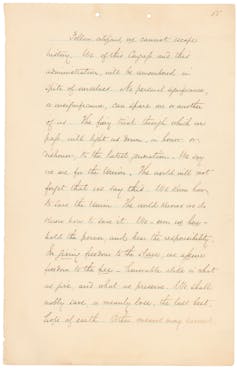Trump's excess and extravagance turned the State of the Union into an action movie
The self-references and superlatives used by President Trump made his State of the Union much more excessive linguistically than this speech’s tone typically is.

State of the Union addresses are supposed to be boring speeches.
Actually, they are not required to be speeches at all. The U.S. Constitution requires only that the president “from time to time give to the Congress information on the state of the Union and recommend to their consideration such measures as he shall judge necessary and expedient.”
Before Woodrow Wilson, almost every president wrote this all up and then sent the document to Congress. After Wilson decided to deliver his as a speech to Congress on Dec. 2, 1913, every subsequent president did, too.
But most of these speeches were still boring, mostly lists signaling policy priorities, often organized by what the president had done the previous year, still wanted to do, and would need from Congress in the coming year.
What President Trump did in his State of the Union address was not boring or staid. He departed from some rhetorical traditions of the presidency, as audiences have come to expect from him.

Looking presidential
Because presidents after Wilson addressed members of Congress in person, they tended to say they needed help from all of Congress, and thus this speech became a time when even partisan presidents would be expected to call for bipartisanship.
This way, the speech could be used as evidence that a president was trying to reach across the aisle.
Almost everybody, especially Congress, knew that the reaching across the aisle was coming, even if almost no one, especially Congress, planned to follow through. It was part of the routine. Predictable.
What has been far less predictable has been the effect of the mass media – especially television – on this particular speech.
Calvin Coolidge was the game-changer on this point. In 1923, he became the first sitting president to make a national radio address, and the speech was his state of the union that he delivered to a joint session of Congress.
Especially after the rise of television– and even more so in an era of social media’s quick takes and visual focus – the president could increasingly be expected to sound and look presidential, including by making calls for bipartisanship.
But the exciting part was to watch the live audience, which is to say, Congress. Today viewers expect a partisan Congress to engage symbolically and act for the screen: to coordinate colors of attire, to stand up, sit down and even talk back to the president, as Republican Congressman Joe Wilson did to President Obama in 2009.
Historically, then, while the speech itself can still expected to be boring and staid, the audience participation is not.

Hyperbole rules
President Trump turned up the volume of his own rhetoric and audience engagement so much so that I would argue he symbolically stepped out from behind the podium and became part of the cheering section. He did this in two main ways.
First, he used his characteristic combination of self-references and superlatives, patterns mastered on the campaign trail. That language made the State of the Union much more excessive linguistically than this speech’s tone typically is.
Dropping in short sentences about what you have accomplished as points for partisan applause is expected. Making these claims drip so heavily with adverbs and adjectives and action verbs is not.

“From the instant I took office, I moved rapidly to revive the U.S. economy — slashing a record number of job-killing regulations, enacting historic and record-setting tax cuts, and fighting for fair and reciprocal trade agreements,” he said shortly after the speech began.
A few minutes later, when discussing his administration’s impact on the economy, he added, “(and) very incredibly, the average unemployment rate under my administration is lower than any administration in the history of our country.”
Note that nothing here is merely an accomplishment or point of pride for Republicans to share. The tone instead is closer to an action movie, with a hero who “slashes” and “very incredibly” performs feats never before seen in the “history of our country.”

This language is characteristic of Trump’s campaign rallies but not State of the Union addresses.
Extravagance is key
The second choice he made on Tuesday made clear he wanted to be in and with the crowd and its frenzy rather than behind a podium.
From a symbolic standpoint, he actually went into the crowd to give out amazing, unexpected, and big prizes: an “opportunity scholarship” for Philadelphia fourth-grader Janiyah Davis; the Presidential Medal of Freedom to Rush Limbaugh; and an Army sergeant’s emotional homecoming to his young family, the Williamses of North Carolina.
While Ronald Reagan started the tradition of telling the stories of invited guests in the gallery, Trump went further, reaching up into the gallery visually with the presentation of these surprises to make his presence – and his impact – known.
[ Get the best of The Conversation, every weekend. Sign up for our weekly newsletter. ]
Vanessa B. Beasley does not work for, consult, own shares in or receive funding from any company or organization that would benefit from this article, and has disclosed no relevant affiliations beyond their academic appointment.
Read These Next
The world risks forgetting one of humanity’s greatest triumphs as polio nears global eradication − 7
Polio may finally be defeated in the next 5 years. Will the world recognize what an extraordinary achievement…
People are getting their news from AI – and it’s altering their views
Even when information is factually accurate, how it’s presented can introduce subtle biases. As large…
Autocracies in transition: In 2025, Cameroon and Tanzania rulers clung to power — but look more vuln
The countries, whose respective leaders recently won widely disputed elections, offer contrasting examples…






